Pont Woryeonggyo (월영교)
9.1Km 2024-10-25
Sanga-dong, Andong-si, Gyeongsangbuk-do
+82-54-821-0649
Le pont Woryeonggyo est un pont sur la rivière Nakdonggang. Au milieu du pont se trouve le pavillon Woryeongjeong qui permet aux promeneurs de profiter d’un moment paisible en appréciant la beauté de la nature qui l'entourent. Le pont a été créé pour rendre hommage à l'amour pur et émouvant d'un couple marié, Lee Eung-tae et sa femme, qui habitait dans cette région. Selon la légende, la femme a fabriqué une paire de mituri (sandales de paille) avec ses cheveux pour son défunt mari. En commémoration de leur amour, le pont a été conçu dans le style des mituri.
Confucian Land (유교랜드)
9.9Km 2024-07-09
346-30, Gwangwangdanji-ro, Andong-si, Gyeongsangbuk-do
Confucian Land, situé à Andong, est un centre d'expositions et d'activités autour du confucianisme en Corée. Le centre permet de découvrir les enseignements de confucianistes historiques comme Toegye Yi Hwang et Yulgok Yi I, mais aussi de découvrir des instruments traditionnels comme le gayageum ou encore le haegeum.
Temple Bongjeongsa [Patrimoie de l'UNESCO] (봉정사[유네스코 세계유산])
9.9Km 2023-05-23
222, Bongjeongsa-gil, Andong-si, Gyeongsangbuk-do
+82-54-853-4181
Le temple Bongjeongsa a été construit par le moine Uisang durant la 12ème année de règne du roi Munmu (règne de 661~681) de la dynastie Silla. Le temple Bongjeongsa est le plus grand temple à Andong, il possède le bâtiment le plus ancien en Corée, le pavillon Geungnakjeon. Certains documents anciens affirment que Neungin Daedeuk, un disciple du moine Uisang, est à l'origine de la création du temple.
Ecole confucianiste Dosanseowon [Patrimoine Mondial de l'UNESCO] (도산서원)
10.0Km 2023-05-23
154, Dosanseowon-gil, Andong-si, Gyeongsangbuk-do
+82-54-852-6800
L’école confucéenne Dosanseowon a été établie en 1574 (7ème année du règne du roi Seonjo), par des disciples des mémoires du premier Lee Hwang.
La salle de conférence Dosan désigne une ancienne académie où Lee Hwang enseignait les études académiques. En 1574 (la 7ème année du règne du roi Seonjo (1567~1608) de la dynastie Joseon (1392~1910)), des érudits confucéens et d’autres lettrés ont inauguré un lieu saint appelé Sangdeoksa. En 1969, il a été désigné comme trésor national Nº 170. Après avoir placé l'espace funéraire et offert les rites sacrificiels, la salle de conférence a été terminé avec la construction de Jeongyodang (Trésor National Nº 210) ainsi que les ailes ouest / est (lieu d'étude pour les savants).
Lorsque vous entrez par l’entrée principale, vous trouverez la salle de conférence Dosan sur votre droite. La structure du bâtiment est simple avec des pilliers carrés et des poutrelles insérées dans les traverses. Si vous continuez plus loin derrière la salle de conférence en passant par la porte Jindomun, vous trouverez la salle Gwangmyeongsil où sont gardés des livres anciens. Vous trouverez également le bâtiment principal Jeongyodang et les ailes ouest / est.
Derrière Jeongyodang, on trouve le lieu saint Sangdeoksa, Jangpangak ainsi qu’un arbre où sont imprimés les ‘12 Chants de Dosan’. Le pavillon Okjingak, qui a été reconstruit en 1970, est désormais un bâtiment d’exposition des reliques de Toegye.
Zootopium (주토피움)
10.3Km 2024-07-09
346-95, Gwangwang Danji-ro, Andong-si, Gyeongsangbuk-do
Zootopium est le plus grand parc animalier dans le parc Gyeongsangbuk-do. Le parc constitue une parfaite destination notamment pour que les enfants puissent découvrir plus sur la nature et les organismes vivants. Le parc propose à la fois des sections intérieurs et extérieurs tout comme des restaurants et des zones de jeux.
Maison principale de la famille Lee de Goseong, branche Tapdong (법흥동 고성이씨탑동파종택)
10.4Km 2021-04-09
9-2, Beopheung-dong, Andong-si, Gyeongsangbuk-do
+82-54-840-5225
Construite en 1695 pour la famille Lee de Goseong, branche Tapdong, cette maison est toujours habitée par les aînés de cette famille. Elle est caractéristique d’une maison de yangban, noble de la dynastie Joseon.
Plusieurs bâtiments ont été ensuite construits et agrandis. Parmi eux, le pavillon Bukjeong a été élevé en 1775. On dit que Beopheungsa, vieux temple de l’ère Shilla se trouvait à cet endroit. La pagode à sept étages Shinsedong élevée devant la maison est son vestige.
Pagode de briques à sept étages Shinsedong (안동 법흥사지 칠층전탑)
10.5Km 2021-07-13
8-1, Beopheung-dong, Andong-si, Gyeongsangbuk-do
+82-54-840-5225
Déclarée trésor national n° 16, cette pagode est la construction en briques la plus grande et la plus ancienne de toute la Corée du sud. Elle mesure 16,8 mètres de haut et 7,75 mètres de large.
Etant donné que le village où elle se trouve s’appelle Beopheung-ri, on suppose qu’elle faisait partie du temple Beopheung qui a été construit au huitième siècle durant l’ère de Tongil Shilla. Mais à part cette pagode, il ne reste aucun monument. A l’endroit de ce temple se trouve actuellement la maison principale de la famille Lee de Goseong, branche Tapdong.
La partie supérieure de la pagode a disparu, mais sur la partie inférieure ont été gravées de belles représentations de dieux tutélaires du bouddhisme. Il reste des traces de joints de tuiles sur la partie supérieure du toit de chaque étage. Selon « Yeonggaji », (livre historique sur la région Andong achevé en 1608), les modifications y ont été effectuées en 1847 et il restait trois bâtiments à l’époque.
Cette pagode se situe près de la maison principale de la famille Lee de Goseong, branche Tapdong et du pavillon Andong Imcheonggak. Il vous est donc conseillé de visiter ces trois monuments ensemble.
Si vous prenez le bus ou le taxi, descendez devant le passage souterrain Beopheung et empruntez-le. Vous verrez la pagode sur votre gauche. La maison de la famille Lee de Goseong se trouve juste devant cette pagode. Puis, en vous mettant face à la maison, prenez le chemin à gauche et marchez 3 minutes. Vous serez devant le pavillon.
Hakbongjongtaek / 학봉종택
10.5Km 2025-08-12
2830-6, Pungsantaesa-ro Seohu-myeon, Andong-si, Gyeongsangbuk-do
+82-54-852-2087, +82-10-6811-1106
'Hakbong Head House is the head house of the Uiseong Kim clan and was originally built near Sogyeseodang Village School by Kim Gwang-chan, an 8th-generation descendant of Hakbong Kim Seong-il, in 1762. In 1964, the house was moved to its current location.
The main building (bonchae) was extended from a ‘ㅁ’-shaped structure to a ‘巳’–shape structure. The anchae (women’s quarters) consists of a daecheong (main floored room) measuring 2-kan (a unit of measurement referring to the distance between two columns) on the right, an anbang measuring 2-kan on the left, and kitchen at the end. The upper part of the low-ceilinged kitchen has a gobang (storeroom) in which household goods used to be stored. The daecheong is large compared to the overall size of the house because head houses usually held many ancestral rites.
The Hakbong Head House has an impressive modern garden that was created during construction work carried out when the house was relocated after the Japanese colonial era. The well-maintained garden with its fantastically-shaped trees and rocks also serves as a venue for musical concerts on a regular basis. Guests will surely be fascinated to find out about the history of the people who once inhabited this house and dedicated themselves to the country in times of trouble.
Imcheonggak à Andong (안동 임청각)
10.6Km 2021-12-22
63, Imcheonggak-gil, Andong-si, Gyeongsangbuk-do
+82-54-859-0025
Ce pavillon est annexé à une maison construite au milieu de la dynastie Joseon (1392~1910) par un Yangban (noble de cette dynastie) appréciant beaucoup le paysage de cet endroit. Le bâtiment le plus connu de la maison est le pavillon Kunjajeong. Ayant échappé aux flammes lors des deux invasions japonaises qui ont eu lieu entre 1592 et 1598, ce pavillon a été déclaré par l’Etat coréen trésor nº 182 en 1963.
La plaque placée sous le toit et au-dessus de la porte a été écrite par Lee Hwang (1501~1570), un des grands savants confucianistes coréens.
Musée des contenus culturels traditionnaux (전통문화콘텐츠박물관)
10.7Km 2023-07-10
203, Seodongmun-ro, Andong-si, Gyeongsangbuk-do
+82-54-843-7900
Le musée des contenus traditionnaux d’Andong est le premier musée digital de Corée à exposer uniquement du contenu numérique, nommé « reliques digitales » (et non les vraies reliques). Ce musée digital haut de gamme touche aussi bien la culture traditionnelle coréenne que l’information et la connaissance. L'établissement est l’équivalent du NEWSEUM (News+Museum) aux Etats-Unis et du « Sigureden » (musée et centre d’exposition digital) au Japon.

![Temple Bongjeongsa [Patrimoie de l'UNESCO] (봉정사[유네스코 세계유산])](http://tong.visitkorea.or.kr/cms/resource/16/2654216_image2_1.jpg)
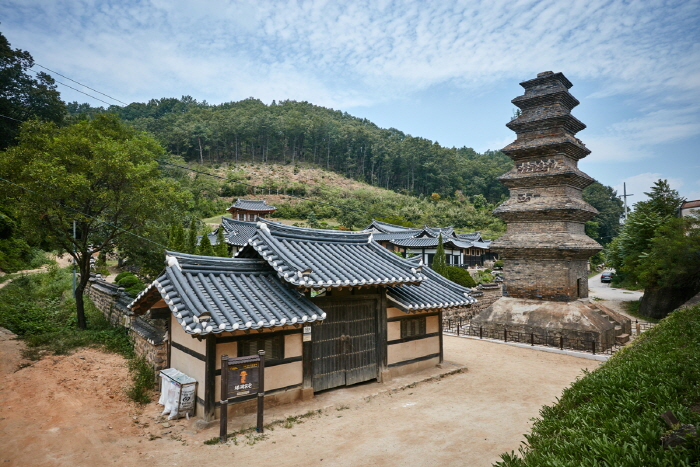
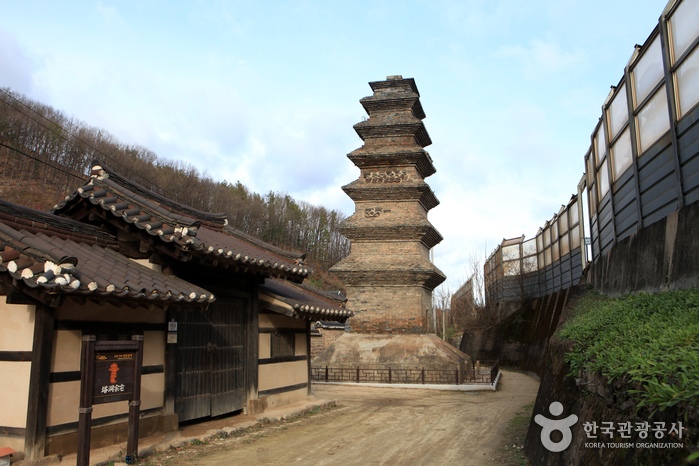
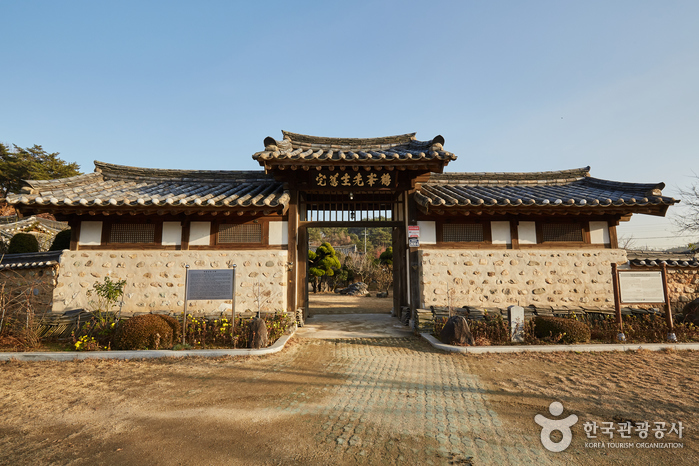
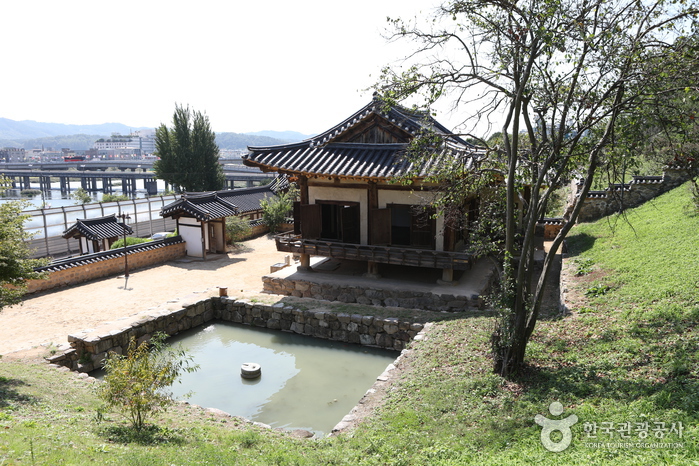
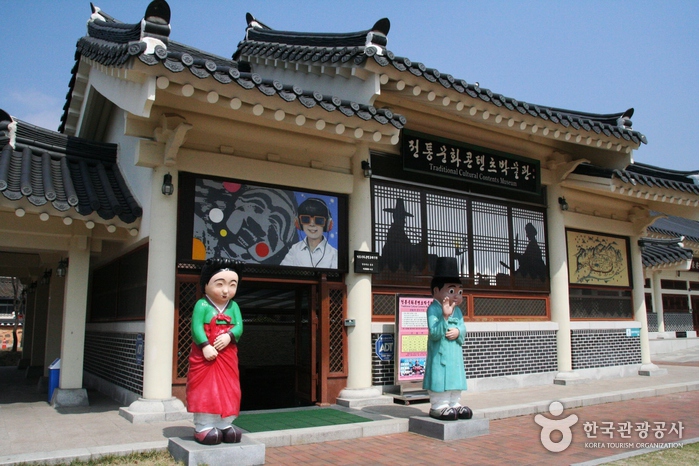
 Français
Français
 한국어
한국어 English
English 日本語
日本語 中文(简体)
中文(简体) Deutsch
Deutsch Español
Español Русский
Русский